By nearly every measure, the American housing sector is broken. For decades, city, state and federal policies have contributed to rising rents, falling subsidies and the systematic shift of homeownership to older, richer and whiter Americans.
That’s the undeniable upshot of a new report from the Joint Center for Housing Studies at Harvard University. The report compiles hundreds of metrics on the health of America’s housing sector and finds that, despite some short-term progress since the recession, the long-term prognosis is grim.
The housing crisis is the ticking time bomb at the heart of the American economy, wiping out savings, increasing inequality and reducing the ability of workers to weather the next recession. It has been in front of us all along, but now, finally, it is impossible to ignore.
1. Low-Cost Housing Is Disappearing From The Market
For decades, housing costs have risen faster than incomes. Since 1960, renters’ median earnings have gone up 5 percent while rents have spiked 61 percent; homeowners earn 50 percent more while home prices have gone up 112 percent.
This has obvious human costs. As the National Low Income Housing Coalition reported earlier this month, a growing share of the nation’s renters cannot afford to live in the cities where they work. In 2016, nearly half of renters were considered cost-burdened — i.e. they spend more than 30 percent of their income on rent — a proportion that has more than doubled in the last 50 years.
Rising rents also have indirect impacts. The Harvard study noted that the cities with the greatest increases in housing costs also have the greatest increases in homelessness. Expensive housing encourages private equity firms and other investors to buy up apartment buildings and evict the current residents. Displacement leads to sprawl, long commutes and workers spending more time away from their families. From cheap restaurants to affordable childcare to neighborhood community centers, rising rents are a tsunami that sweeps away support networks and social amenities critical to low-income residents.

But wait, it gets worse: The Harvard study found that the fastest rise in home prices is at the low end of the market. “Cheap” homes, or those selling for less than 75 percent of the median price, are appreciating at twice the rate of high-end homes.
The reason for this appears to be that low-cost housing is simply disappearing from the market. Since 1990, more than 2.5 million apartments renting for less than $800 per month have been demolished, upgraded into luxury condos or converted into hotels or offices. Between 2010 and 2017, prices in poor urban neighborhoods rose 50 percent faster than in rich neighborhoods, forcing residents to choose between spending an ever-increasing share of their income on rent or moving away.
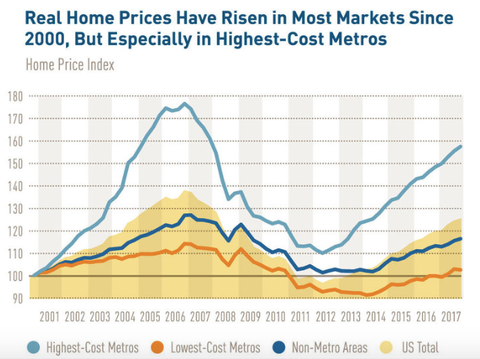
Many, it seems, are choosing the latter. In the last two decades, the number of poor renters living in “low-density census tracts of metro areas”— economist-speak for suburbs — has increased from 4.5 million to 7 million, surpassing the number of poor renters living in cities. It’s official: The housing crisis has come to the suburbs.
2. America Isn’t Building Enough Homes
Before the recession, America built around 1.1 million new homes per year. In its best year since, the country built just 849,000.
This makes no sense. Though the American population has been growing steadily, there are now fewer homes on the market than in any year since 1982. Despite seemingly bottomless demand, the construction of apartment buildings fell by 10 percent last year.
James Madden, an affordable housing developer in Seattle, said the reasons for the slowdown are complex. Americans move less now than they used to, meaning fewer are putting their homes up for sale. Construction costs are also booming due to higher material costs. And major cities have fewer plots available for development.
There is also the “NIMBY factor,” delays and obstruction caused by neighbors seeking to preserve their views, their redlining-inspired height restrictions and (especially) their parking.
America also has a nationwide shortage of construction workers. According to the Harvard report, building firms have 200,000 job openings, the highest number in a decade. And yet, despite persistent labor shortages, construction worker wages are rising slower than the rest of the private sector.
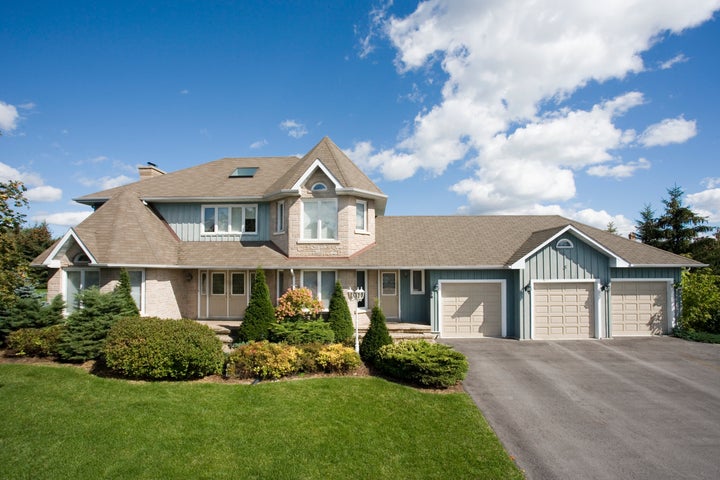
Madden said that all these costs, taken together, mean developers can only make a profit on high-end apartments and McMansions. He estimated that in Seattle, developers would struggle to break even on apartments renting for less than $1,900 per month for a one-bedroom unit. In New York or Boston, he said, the figure is probably closer to $3,000.
“In a lot of cities,” he said, “the market can’t supply housing for people making less than six figures.”
The Harvard report showed this too. Almost half the apartments built in 2016 were in large buildings of more than 50 units; nearly nine out of 10 had swimming pools. Homes of less than 1,800 square feet ― the now-mythical “starter home” — made up just 22 percent of construction in 2016, a fall from 50 percent in 1988.
According to the National Low Income Housing Coalition, America is 7.7 million units of low-income housing behind where it needs to be, and the country has simply stopped building them.
3. America’s Cities Are Unaffordable
The United States is not one big housing market, of course. Rents and homebuilding vary wildly from city to city as populations move and sectors boom and bust.
But here, too, the news is grim. In 1988, just one city in America had homes that cost, on average, more than six times the annual median income. Today, 22 of them do.
And this number is only going to grow. Last year, 13 of America’s 100 largest cities — from big ones like Seattle and Las Vegas to smaller ones like Salt Lake City and Orlando — had home prices that rose by more than 10 percent. San Jose, California, had the worst mismatch, with the median home costing 10 years of the median income, at $1.1 million. Rounding out the top five were Los Angeles (9.5 years), Honolulu (9.2), San Francisco (8.9) and San Diego (8.1).
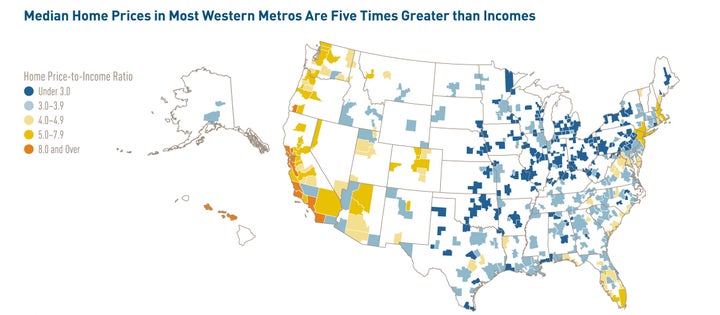
But it’s not just that expensive cities are expensive. Almost three-quarters of Pittsburgh residents own a home, compared to fewer than half of Los Angeles residents. As prices continue to rise, high-cost cities will have a greater proportion of the population vulnerable to displacement and spending more of their paychecks on rent rather than savings, pensions or other forms of equity. If America’s biggest cities, where job growth has been concentrating for years, can’t offer anything beyond check-to-check living, the entire country is sleepwalking into a crisis.
It’s worth noting just how unprecedented this is: One of the most startling statistics in the Harvard report is that 30 years ago, you could buy a house in 72 of America’s 100 largest cities for less than 18 months of their median salaries. Today, that’s possible in just 25 of them, and shrinking every year.
4. Racial Disparities Are Getting Worse
At every level, the housing crisis hits minorities harder.
Since 1987, white homeownership rates have increased by 3.6 percent, while black homeownership rates have fallen by 2.7 percent. Black Americans are now nearly 30 percent less likely than whites to own a home. Hispanics and Asians, while increasing their homeownership rates faster than whites over this period, still trail by 26.1 percent and 16.5 percent, respectively.
But the racial wealth gap goes much deeper. Even among homeowners, African-Americans and Latinos have less than half the net worth of whites. Among renters, blacks and Hispanics are more likely to be spending more than 30 percent of their income on rent — even when they earn the same salaries as whites.

As noted in the National Association of Real Estate Brokers’ “State of Housing in Black America” report, African-American home buyers are more likely to take out “nonconventional” loans, often from the Federal Housing Authority, which require smaller down payments and lower credit scores.
In high-demand cities, homebuyers receiving housing assistance or nonconventional loans often lose out to cash offers or applicants with traditional loans. Black applicants are twice as likely to be denied home loans as white applicants. While many cities have programs to help veterans, minorities and low-income families with down payments, housing costs in many cities are now so high that even a 3 percent down payment is out of reach.
And the housing crisis doesn’t just make it harder to buy, it profoundly affects where people choose to live. Though the number of Americans living in poverty has increased by 41 percent since 2000, the number of “high-poverty census tracts” has increased even faster. By now, 51 percent of blacks and 44 percent of Hispanics live in these areas of concentrated poverty, compared to just 17 percent of whites. According to numerous studies, children who grow up in areas of concentrated poverty are disadvantaged on nearly every measure, from school quality to violence to social mobility.
All of this adds up to one inescapable conclusion: For some Americans, housing is a way out of poverty. For others, it is the trap keeping them there.
5. High Housing Costs Shift Money From The Young To The Old
One of the most glaring and least remarked-upon forms of inequality is that between older and younger Americans. In nearly every way, rising home values and booming rents have benefitted older Americans while holding younger Americans back.
Since 2013, the average homeowner has seen their net worth rise from $201,600 to $231,400. Renters have watched theirs fall from $5,600 to $5,000. Though every age bracket contains significant inequalities, Americans over 65 are the only cohort with higher homeownership rates now than in 1987. Homeownership for every other age group has fallen significantly.
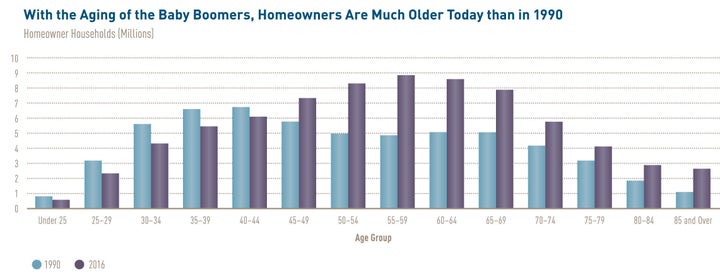
Older people have always had more net worth than younger people, of course, but never like this. Thirty years ago, families headed by someone over 62 had eight times the median wealth of families headed by someone under 40. By 2013, older families had 15 times the wealth of younger families. Americans over 65 — many of whom are retired from the workforce — have seen a 24 percent rise in their incomes since 2000, compared to a 2 percent fall among 25- to 34-year-olds.
Though stocks and other forms of equity play a role in this divergence, homeownership is a significant factor. In high-cost cities like San Francisco, Boston and New York, millions of homeowners have doubled or tripled their net worth in the last decade thanks to the appreciation of their homes. This gives them easier access to credit and the option of selling their home for cash or renting it for retirement income.
It also, crucially, gives them an incentive to prop up home values even further. This fundamental mismatch between renters, who want property prices to fall, and owners, who want them to rise, is already the defining political battle in many growing cities.
And it’s not going to resolve itself. Americans 65 to 74 are now the country’s fastest-growing age group. According to a 2014 AARP survey, 88 percent of older Americans want to remain in place as they age. Census surveys show that mobility, especially moving within the same city, has been declining for a decade now. If baby boomers stay put, that will put an even greater strain on the housing market, as many live in large homes where two, three or four bedrooms sit empty. Large swaths of growing cities are actually becoming less dense even as demand for housing explodes.
Unless the baby boomers start moving, cities have no way out of the housing crisis that doesn’t involve building more homes.
6. Policies At Every Level Are Making It Worse
The Harvard report noted that the only American cities where rent growth slowed down last year were those that added more new apartments than new renters.
In Seattle, rents fell by 1 percent last year after the city added an estimated 10,000 new apartments, almost doubling its previous construction record. From 2015 to 2017, when the city was adding fewer units, rents went up 5 percent every year. Even though most of the new apartments were high-end studios and one-bedroom units, the extra supply absorbed enough of the city’s new residents to ease pressure on the rest of the market.
But while building more homes in growing cities is a necessary condition for solving the housing crisis, it is not a sufficient one, Madden said. Rents are still unbearably high, and the costs of building show no sign of coming down. The market simply isn’t supplying homes for middle-class residents anymore. The only way to bridge that gap is for cities to deliberately build, fund, preserve and encourage affordable housing.
Madden estimated that Seattle, like other cities, has dozens of affordable housing projects ready to be built, but no funding to build them. An injection of cash could put up to 3,000 units of affordable housing into the pipeline within a year, he said. City lawmakers (and taxpayers) aren’t willing to fund these projects. State and federal bodies, which have far deeper pockets, simply don’t care.
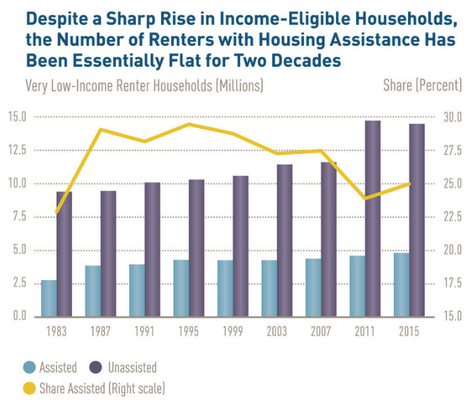
And the cavalry is decidedly not coming. Since 1988, as the number of low-income families has increased by 6 million nationally and the number of cheap apartments has fallen by 2.5 million, the federal government has added just 950,000 people to the rental assistance rolls. In April, HUD Secretary Ben Carson proposed a plan that would make this worse, increasing rents for almost 5 million families and imposing a work requirement to receive assistance.
Other policies at the federal level also make this harder. Trump’s tariffs on wood, aluminum and steel will likely drive up construction costs even further. Grants for public transportation are under constant threat. And the GOP’s cut to the corporate tax rate reduced the value of low-income housing tax credits, a little-noticed change that is expected to result in the construction of 235,000 fewer affordable units over the next decade. Public housing, too, continues its decades-long deflation, with the number of units falling by 32,000 last year, its lowest level since the early 1970s.
The closest thing to good news in the Harvard report is that the housing crisis is man-made. Policies got the U.S. into this mess, which implies that policies can get the country out of it. As the costs of construction and rents increase and as the disparities widen, the question is whether politicians ― after years of being asleep at the wheel ― care enough to finally make hard decisions about addressing the problem.
